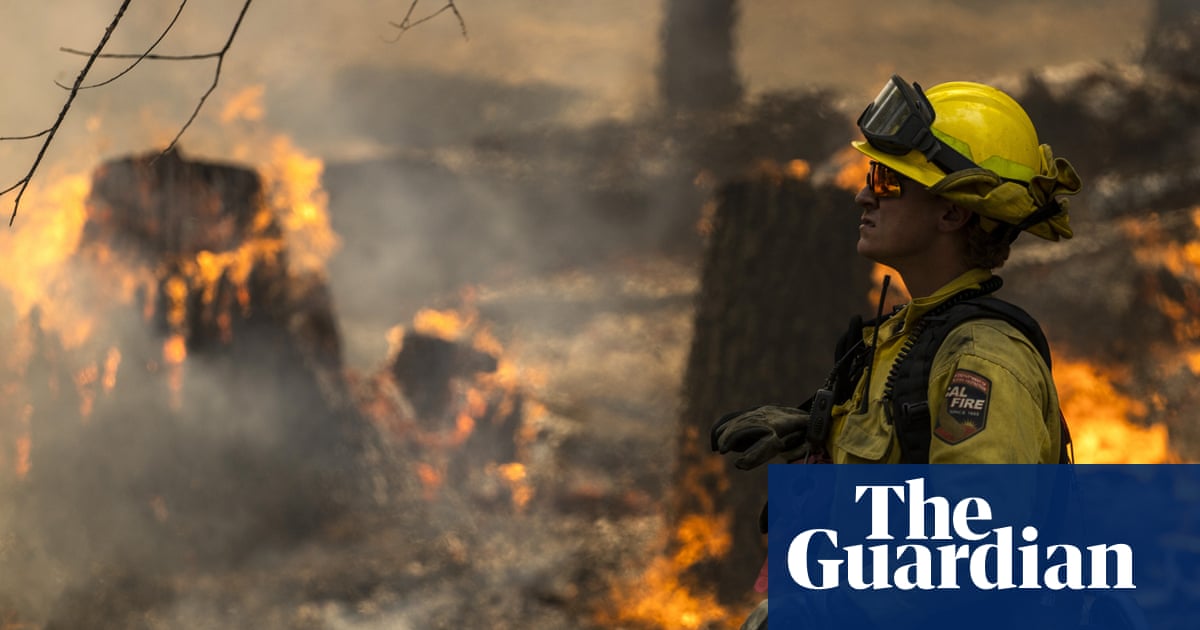PROTECT YOUR DNA WITH QUANTUM TECHNOLOGY
Orgo-Life the new way to the future Advertising by AdpathwayThe costs of extreme weather events such as floods, bushfires and storms have nearly tripled in Australia since the 1990s, insurers have warned, with poorer communities disproportionately burdened.
The climate crisis, ageing infrastructure and growing populations in increasingly affected regions have left the country more vulnerable, according to a report released on Tuesday by the Insurance Council of Australia.
In the 2020s, extreme weather has been responsible for $4.5bn in claims annually on average, the ICA report said. The three events declared as insurance catastrophes in 2025 alone generated nearly $2bn in claims, most of which related to housing.
Sign up: AU Breaking News email
Ex-Tropical Cyclone Alfred cost households and businesses over $1.4bn in claims, while flooding in north Queensland in January and in NSW’s mid north coast and Hunter region in May made up the remaining $540m.
Smaller events not declared catastrophes generated millions more in insurance claims.
“While Australia has always faced extreme weather, the accelerating losses per person and their compounding impact on communities is costly and ongoing,” the council’s chief executive, Andrew Hall, said.
“Each decade is costlier than the last.”
The report found economic losses from extreme weather events almost tripled over the last three decades even after stripping out inflation, citing analysis from multinational insurance firm Munich Re.
Australia faced higher economic costs from extreme weather on average per person than France, Germany and Canada, the analysis found. It had historically faced higher costs than New Zealand until the 2020s, after recession-inducing and enduring cyclone damage in that country in 2023.
Insurance claims and costs were likely to keep rising as global heating accelerates, according to Seth Westra, a professor of climate risk at the University of Adelaide
“You’ve got fire damage, flood damage, coastal inundation, tropical cyclones: each of these are expected to have more severe impacts because of climate change,” Westra said.
“There’s absolutely no sign of that stopping … The trajectory is only up, in terms of insured costs.”
Australia faced billions more in uninsured losses, with just under half of Australia’s annual losses from extreme weather not covered by insurance, according to the report.
Only one-third of extreme weather losses on average were uninsured in the US, New Zealand and Canada in the 2020s.
Homes in flood and fire-prone areas have been subject to huge insurance cost increases as climate-driven disasters grow more frequent and intense.
after newsletter promotion
The ICA estimates 186,000 of the 242,000 Australian homes most likely to face floods do not have flood cover, for example. The vast majority of those – 70% – are in regions with average incomes below the national median.
“There’s a clear correlation between high flood risk and socioeconomic disadvantage, with our country’s most vulnerable the least likely to have an insurance safety-net when disaster strikes,” the report read.
Rising numbers of homes are expected to become uninsurable as global heating continues, with the Albanese government’s climate risk assessment warning up to 185,000 properties in Queensland would face “very high risk” of natural disaster if global heating continued unabated.
That report also warned annual costs across the economy from extreme weather could reach $40bn a year in 2050, even if global temperatures rose only 1.5C.
Surging uninsured damage would force governments to determine who pays for recovery, Westra said.
“[Governments] need to think about what happens if, all of a sudden, large parts of the [country] can’t afford insurance any more.”
The insurance council called for governments to fund support measures and scrap insurance levies that inflate the costs of premiums – already boosted for those at higher flood risk.
The NSW treasurer, Daniel Mookhey, described insurance levies as a “candidate for worst state tax” and recommitted to reforming the state’s emergency services levy after the Albanese government’s economic reform roundtable.
“They are very inefficient taxes, and that’s why, for example, we are looking forward to [discussing] the future of the emergency services levy,” Mookhey told a parliamentary estimates hearing in August.


 6 hours ago
1
6 hours ago
1


















 English (US) ·
English (US) ·  French (CA) ·
French (CA) ·